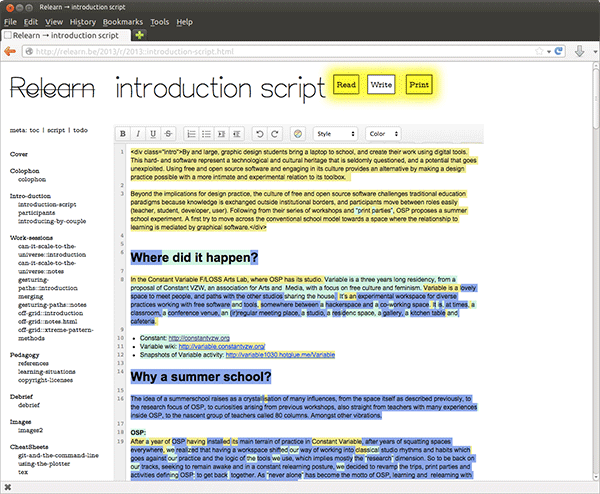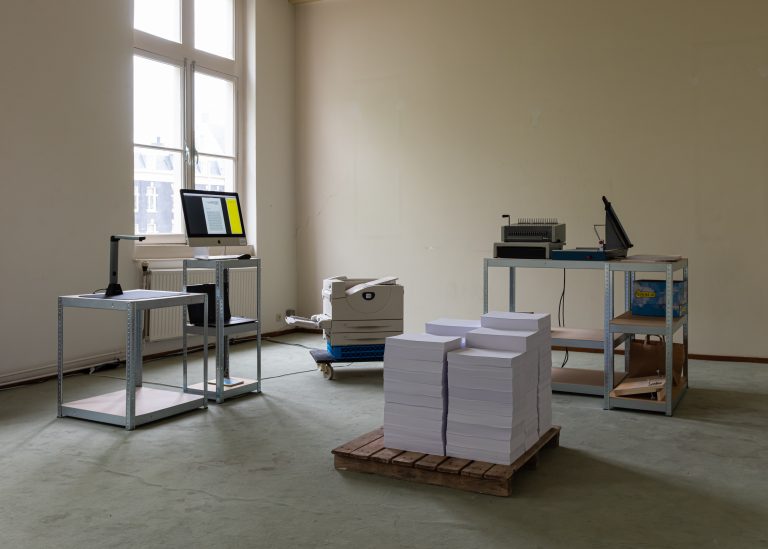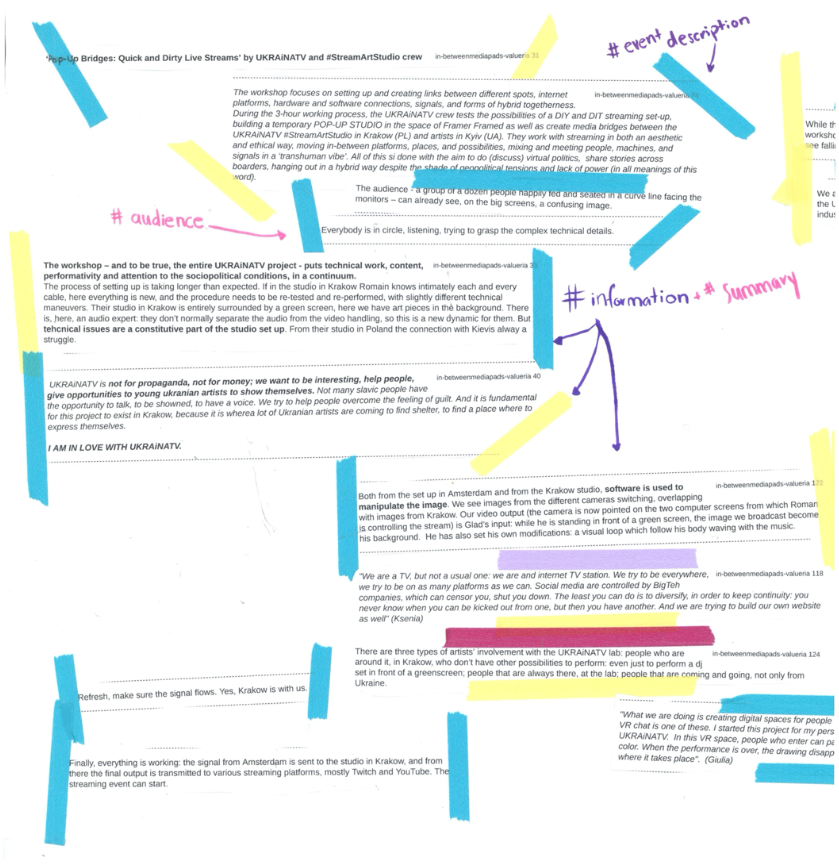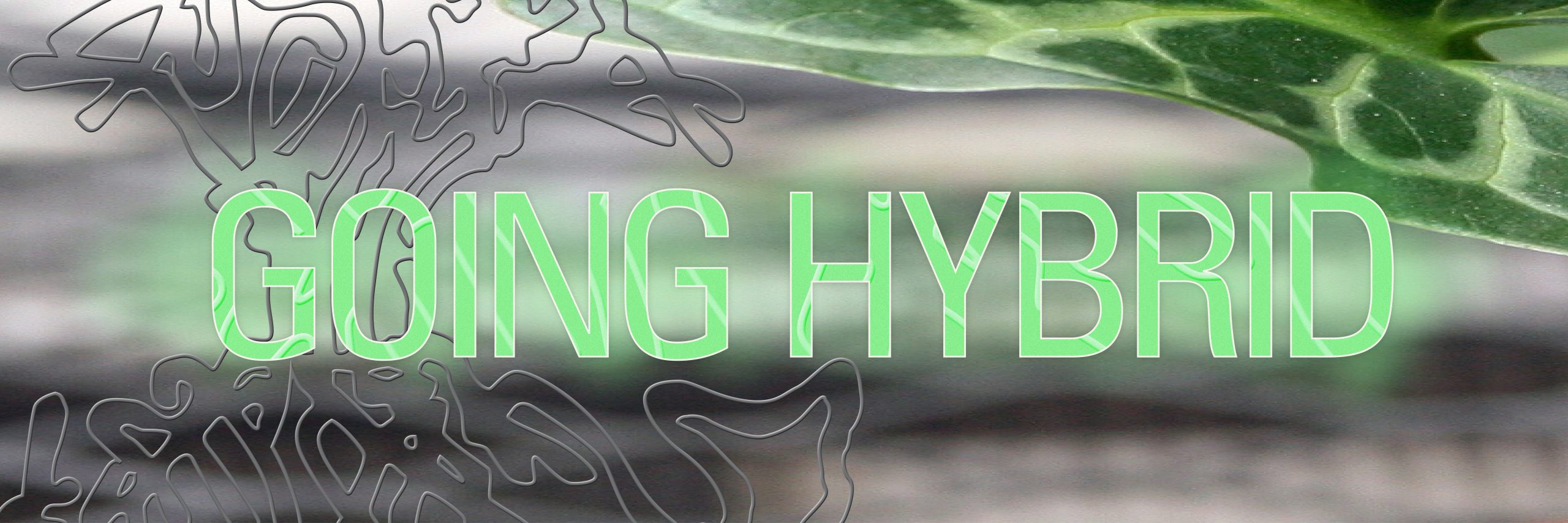The cultural sector is stuck in event overkill. Openings, symposiums, workshops, artist talks, and conferences follow each other in rapid succession. Each one puts an even more important matter on the agenda than the previous one. More often than not these events position themselves as offering a start of something. But what happens when the event is over? Where does all the meaning go?
It is often reduced to a 12-hour-long recording on YouTube, with no means to decimate any of the information. Sometimes we are blessed with an automated transcription, allowing us to scrape through some of the content. But most often, the meaning disappears into the digital void. It seems that most cultural institutions are so busy organizing events, that their archives become an institutional obligation to justify received funding. To readers, such reports appear like the leftovers of an allyou-can-eat buffet, a patchy and chewed-out reminiscence of something that used to be meaningful to a live audience.

It’s time to reinvent the cultural event report. During these past two years, the Hybrid Publications Research Group decided to take up this challenge. Our main objective was to make room for reflection and collectivity, using alternatives ways to publish online. In this process, we were keen to experiment with open-ended, multivoiced, and non-linear event reports. Instead of creating FOMO-inducing descriptions, or bureaucratic documents, we wanted to create a structure for event reporting that would give readers an interesting, explorative experience. We looked at real-time transcriptions and instant publishing, non-linear and modular formats, on-demand printing stations as part of exhibitions, and audio-text hybrids. We found inspiration in zines, interactive digital longforms, wikis, annotated maps, hybrid indexes, chat-to-print tools, book printing machines, and interventions in public space. There are so many alternatives to the boring and bureaucratic event report!
But reinventing the event report is easier said than done. Many of us, being cultural workers ourselves, know the struggle to stay relevant whilst running on next to no funds all too well. In most cases, it’s not the lack of motivation, but a lack of means that keeps us from continuing. In order for it to work, a new way of event reporting needs to be as low-effort as possible.
Another big issue is readership attention. On the Web 2.0, content is cheap, fast, abundant, and addictive. It’s increasingly difficult to keep even the most dedicated readers interested as they grow more impatient, quickly distracted, and disengaged. To create space for reflection and critique, event reports first need to be inviting and engaging.

We also ran into a paradox between the urgency in building forms of publishing resistance and the general slowness with which new tech is embraced. Introducing new tools or methods will always require curiosity and most likely will push audiences outside of their comfort zone. Yet the experimental side of tech (with its geekiness) tends to create a literacy barrier for people who are used to frictionless interfaces. As a result, experimental publications are often inaccessible and unfit to create a critical mass for resistance in online media.
We do not have the perfect solution for these three dilemmas of cultural event reporting. But we do have a proposal to continue experiments. We call the proposal: EtherPort. EtherPort is a tool for cultural organisations to make more experimental, multi-voiced, and non-linear event reports. The tool helps to standardize the event reporting workflow, reducing production workload and clarifying the role division between authors and editors. It was built by the research group using the hybrid publishing tool Ethertoff, developed by Open Source Publishing collective in Brussels.

Let us show you EtherPort…
- Workflow integration: All steps in creating an event report, from (realtime collaborative) writing to editing and publishing, are integrated into EtherPort.
- Hybrid publishing: Publishing an event report on EtherPort generates two versions simultaneously: a web version, and a printable .pdf.
- One-click design: Both the web version and .pdf of your publication are automatically designed using a template. (It is possible to create your own template, to match the visual identity of your organisation, in CSS.)
- Content labelling: EtherPort uses a labelling system that allows readers to engage with the event report in a non-linear way based on theme or type of content. This same feature creates links between reports of different events, which makes it easier to navigate and activate the event report archive.
- Content templates: To accomodate custom serialization, it is possible to create pad templates for different types of publications.
- Multi-media content: EtherPort supports text, images, videos, and timestamps.
- Shared infrastructure: Multiple organisations can use the same instance of EtherPort. This shared infrastructure can grow into a shared archive of event reports, in which relations between events from different organisations become visible and navigable.
EtherPort was developed by the Hybrid Publishing Research Group in the context of the two-year research project Going Hybrid. Members of the Hybrid Publishing Research Group were Ania Molenda, Anna Maria Michael, Ashley Maum, Carolina Pinto, Ebissé Wakjira, Gijs de Heij, Maria van der Togt, Ray Dolitsay, Sepp Eckenhaussen, Tommaso Campagna and Victor Chaix.
This video was edited by Ray Dolitsay.
Text and voice-over by Carolina Pinto and Sepp Eckenhaussen, based on previous blog-posts from the Hybrid Pubs research group.
The Hmm, MU, and Affect Lab launch ‘Toolkit for the In-Between’


